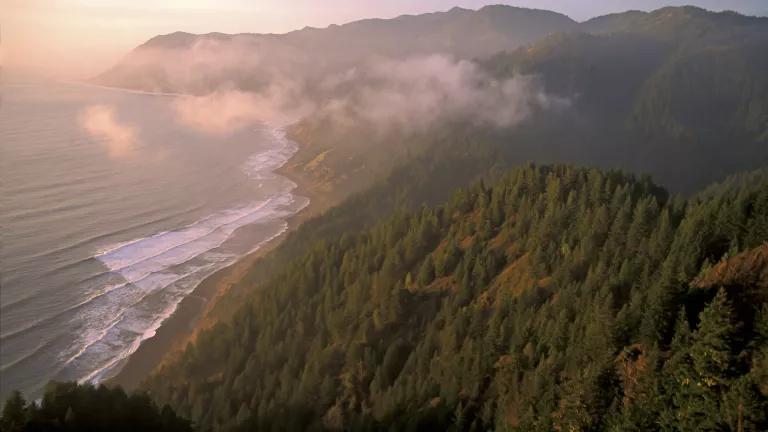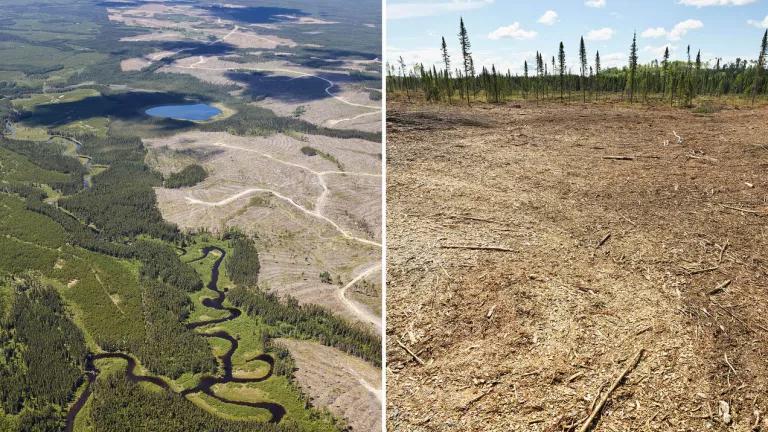Polar bears use arctic sea ice as a platform to hunt their favorite food, seals. Unfortunately, climatic warming is rapidly melting the ice. Without it, scientists warn, polar bears will not survive.
But why worry? Polar bears evolved from omnivorous, land-dwelling brown bears, right? In fact, modern polar bears have been observed eating berries, seaweed, moss, grass, roots, sedges, eggs, shellfish, crabs, fish, rodents, birds, caribou and muskoxen, just like their brown cousins. So if the sea ice melts, polar bears will simply re-adapt to living on land, right?
Wrong.
The first problem is time. When polar bears split from brown bears hundreds of thousands of years ago (or longer), it took them at least 10,000 - 30,000 years to evolve into the big, white, ice-dwelling creatures we know today. Even if they could “re-evolve” so quickly back into terrestrial bears, it would be far too slow a pace to keep up with today’s warming trend. The Intergovernmental Panel on Climate Change predicts that within the next century, global average surface air temperatures will increase 1.8 – 4.0 degrees Celsius—higher than anything polar bears have experienced in at least the last several hundred thousand years (the Eemian interglacial, which occurred about 125,000 years ago, was about 1 - 2 degrees Celsius warmer than today; the Holocene Climate Optimum (or “Hypsithermal”), which occurred about 6,000 years ago, was about 1-1.5 degrees Celsius warmer than today).
As a result of these unprecedented (in recent geologic history) temperatures, within just the next 100 years (or sooner), summers in the Arctic could be ice-free. This is a profound development, because there is no evidence that the Arctic has been seasonally free of ice in at least the last 800,000 years. Polar bears, whose populations have declined and genetically bottle-necked during natural periods of climate warming in the past, seem to have always been able to persist because of some availability of year-round sea ice.
Which brings us to the second, related problem. Polar bears are highly specialized, both physically and physiologically, for a world of sea, ice, and meat: shorter, stockier claws to better grip prey and ice; smaller, more jagged molars and larger, sharper canines, better serving an almost exclusively carnivorous diet; all-white coats to provide camouflage while stalking prey; larger, thicker bodies to increase the ratio of surface area to body mass, helping the bears conserve energy and body heat; and a more elongated body, skull and nose to enhance streamlining and better enable the bears to thrust their heads through snow and ice into seal denning lairs and breathing holes.
These adaptations, however, become serious impediments in a warmer, terrestrial environment. The bears lack the longer, more dexterous claws needed to uproot plants, rake up berries, or dig up insects or rodents. Their teeth are unsuited to grinding vegetation. Against the greens and browns of the tundra, their white color suddenly exposes, rather than conceals them. Perhaps most fatally, their large size causes them to overheat quickly, preventing them from chasing prey for more than a few seconds, and making it difficult to consume enough calories to meet their energy needs.
Thus, although polar bears have been observed eating terrestrial food sources, scientists such as Dr. Ian Stirling, professor of wildlife biology at the University of Alberta, have concluded that these foods are unsustainable and cannot meet the calorie needs of such big bears in such a cold climate. As he explains in his book “Polar Bears: The Natural History of a Threatened Species:”
The polar bear took tens of thousands of years to evolve from a terrestrial bear into the ultimate ice bear. That process cannot be reversed in a few generations, during which time the polar bear would once again become a terrestrial bear and revert to a diet of berries, other vegetation, and bird eggs. . . . In many cases, the energy expended while searching for berries or chasing prey such as flightless geese during their molt exceeds the caloric return, even if the bears are successful. . . . In fact, it is particularly telling that the smallest black and brown bears in the world are found in the arctic tundra adjacent to the coast of northern Labrador and the Beaufort Sea, respectively, precisely because the terrestrial food resources available to them in those areas are so meager.
(Page 278.)
Ultimately, whether polar bears can adapt to land may be irrelevant. Polar bears are defined by the sea ice ecosystem they inhabit. Without it, polar bears will cease being polar bears. Even if they could somehow manage to persist on land, they would quickly encounter and hybridize with their brown neighbors (as they have already begun to do), and the iconic, white sea bear we recognize so readily today would disappear. For all practical purposes, the species would be lost.
Fortunately, NRDC and others are working hard to prevent that from happening, by combatting climate change, protecting polar bear habitat, and working with the international community to ban the global trade in polar bear parts. Through these efforts, we hope to curb rising temperatures, decelerate the loss of sea ice, and buy these emblematic bears as much time as we can.
Will polar bears adapt to land? Let’s do everything we can to make sure we never have to find out.



